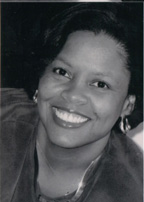 |
Valda Boyd Ford |
He is expected to sit for some indeterminate time waiting for an unknown person who will lead him through some unidentified tests who will place him in an unusual room where he will sit for awhile in the comfort of his designer gown and his paper sheet. Someone (or several someones) will ask him questions that seem to be questions he just answered – if he understood them, and then he will have to donate some (or some more) body fluids for some reason. Then he will be told to take some “different/alternative” treatment (for him) and told to return in two to four weeks to determine if the treatment works.
So what’s the big deal, you say. He’ll figure it out in time. It’s not our responsibility to bridge all those gaps (no – chasms) in his level of understanding – is it?! Well – yes!!!
One of the greatest challenges we face is making sure that the patient is aware of everything that is going on around him and that he is truly an informed consumer of health. That is quite an issue when a big part of the challenge is developing relationships with others who may not have the same values, beliefs, history, religion, lifeways, concept of community, concept of health, or a host of other differences.
In reality, since America is the land of the free and the home of the brave, there has always been “diversity” within our community. However, the decade from 1990 – 2000 was notable for the dramatic changes in demographics – racial, ethnic, religious, and a host of other variations – in the Omaha area.
Everyone in our health care system, from the person who answers the phone to the primary care provider who makes a diagnosis and develops a plan of care, plays a role in making sure that everyone who comes to us for care actually receives the care they need. While on the surface that seems like a “no-brainer” (I mean – that’s why we’re here), it gets a little complicated when we come face to face with the “diversity” of our patients and their families.
So what, you ask! So what’s the big deal? Sure – you recognize the diversity within the patient population and among your colleagues. You may feel good about it or overburdened by it. We want to move from simply recognizing diversity to providing culturally competent care. Culturally competent care delivery means that you (individually and organizationally) have the capacity to provide safe, efficient and effective care to everyone regardless of language or differing belief systems or physical and mental capabilities.
And yes, this “cultural competence thing” is a lot to chew on, but we’ll be breaking it down into digestible morsels. Stay tuned!
Valda Ford is director of Community and Multicultural Affairs for UNMC Community Partnership.